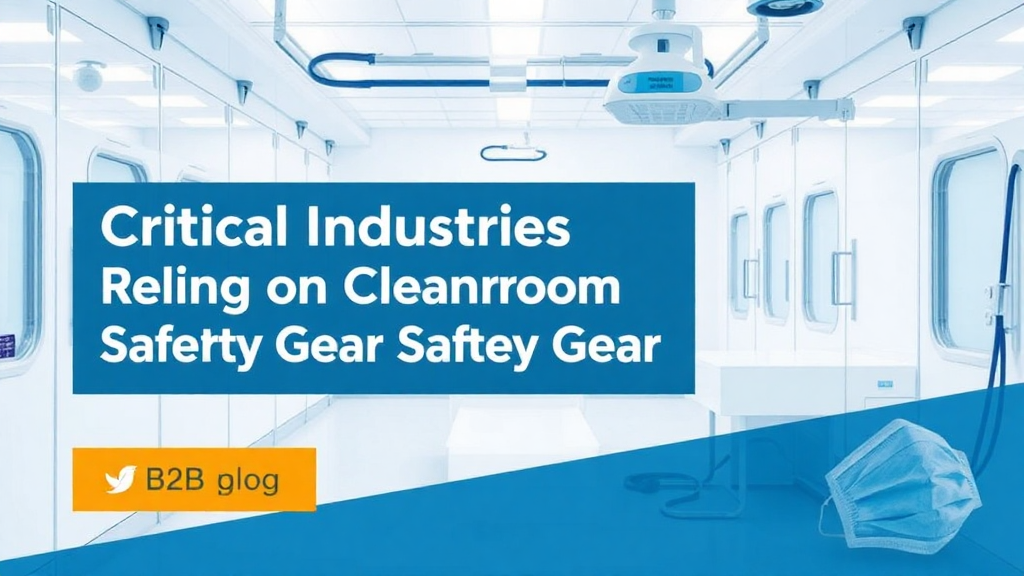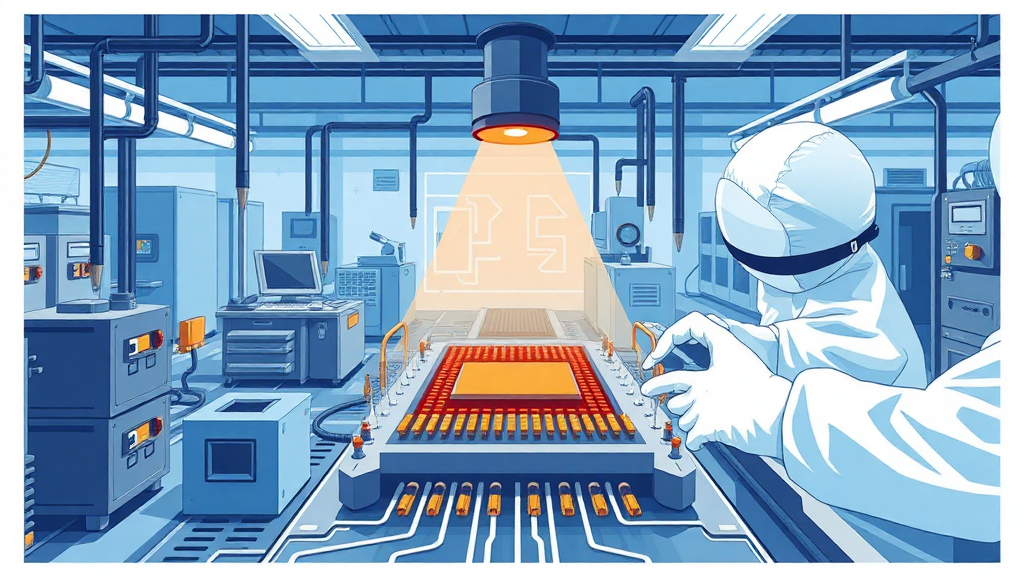
Picture this: a leading semiconductor firm slapped with a $15,000 FDA fine in 2024 after microscopic contaminants derailed production. The root cause? Subpar gowning practices with cleanroom suits mismatched to their ISO 5 environment. This isn’t just a cautionary tale—it’s a wake-up call resonating across industries in 2025. With contamination costs soaring—projected to hit $28 billion by Q3 2025 according to Cleanroom Technology—selecting the right cleanroom suit is no longer optional; it’s a financial and operational imperative.
This comprehensive guide empowers facility managers and B2B buyers with actionable insights to choose cleanroom suits that align with ISO standards, enhance safety, and optimize costs. Whether you’re managing a pharmaceutical lab, a semiconductor fab, or a biotech research facility, the stakes are high. A 2025 Cleanroom Trends Report reveals that 80% of cleanroom professionals now prioritize sterile apparel to meet stringent regulations, up from 65% in 2023. Let’s dive into how you can make informed decisions to protect your facility and bottom line.

Cleanroom suits are the frontline defense against contamination in controlled environments. From pharmaceutical aseptic filling to microelectronics manufacturing, these garments prevent human-shed particles—up to 500,000 per minute, per IEST—from compromising product integrity. In 2025, with regulatory bodies like the FDA and EMA tightening gowning standards, the right cleanroom suit can mean the difference between passing an audit or facing fines exceeding $12,000 per incident.
Beyond fines, contamination events can trigger product recalls, production halts, and reputational damage. A biotech facility recently lost $50,000 in a single batch due to inadequate suits, a preventable loss with proper apparel selection. Conversely, investing in high-quality cleanroom suits, like those from Midposi’s autoclavable line, can yield significant ROI through reduced waste and improved compliance.
ISO 14644-1:2025 defines cleanroom classifications based on allowable particle counts per cubic meter. Your suit must match your facility’s class:
Expert Tip: For USP 800 hazardous drug compounding, add chemical-resistant layers to meet OSHA and NIOSH standards, as outlined in OSHA guidelines.

| Feature | Disposable (Tyvek®) | Reusable (Polyester) |
|---|---|---|
| Cost Per Use | $8–$12 | $25–$40 (after 10+ cycles) |
| Best For | High-risk ISO 5 labs | Moderate-risk ISO 7/8 zones |
| Particle Shedding | <0.5 microns | Increases after 15 washes |
| Sustainability | Higher waste | Lower footprint |
An aerospace manufacturer partnering with Midposi slashed contamination delays by 25% in 2024 by adopting ESD-safe reusable suits for their ISO 6 cleanroom, saving $42,000 annually. This shift highlights how reusable suits can balance cost and performance in moderate-risk settings.
Midposi Lab, a biotech research hub, saved $10,000 in 2024 by switching to bulk sterile coveralls. Their autoclavable suits reduced replacement costs by 30% while maintaining ISO 5 compliance, proving the value of strategic procurement.
Material choice is pivotal. For static-sensitive electronics, Fedora Maxima ESD fabric prevents microchip damage. In chemical-heavy pharma settings, ProShield® 2 laminate blocks hazardous exposure. Always match materials to your facility’s risks.

A 2025 survey found 61% of technicians prioritize elastic ankles and waists for 8-hour shifts. Features like thumb loops and knit wrists prevent sleeve ride-up, enhancing mobility without compromising safety.
For ISO 5+ or GMP Grade A zones, pre-packaged, gamma-irradiated suits are non-negotiable. Midposi’s autoclavable options, supporting up to 50 cycles, streamline high-throughput workflows.
Reusable suits must withstand repeated sterilization. Midposi’s polyester designs maintain integrity for 50 cycles, reducing long-term costs by 40% compared to disposables.
With sustainability in focus, 80% of facilities prefer sterile options in 2025. Midposi’s EcoFlex line, made from biodegradable polypropylene, decomposes 70% faster than Tyvek®, aligning with eco-goals.
Selecting the right cleanroom suit is just the start. Here’s how to maximize their impact:

A microelectronics facility increased yield by 15% after adopting Midposi’s microfiber suits with advanced filtration, saving $200,000 annually in rework costs.
A sterile compounding lab passed three consecutive FDA audits with zero citations after switching to disposable IsoClean® suits, reversing prior failures due to frayed reusables.
A waste management facility cut hazardous waste by 20% with autoclavable suits, saving on disposal costs and boosting sustainability.
ISO 5 suits require full-body coverage with hoods and socks for sterile environments, while ISO 8 suits use lighter frocks for less critical zones. Compliance hinges on matching your facility’s class.
Yes, if laundered in ISO 4+ facilities. However, particle shedding increases after 15 washes, so rigorous maintenance is key.
Garments with carbon fiber threads, like Gore-Tex ESD, dissipate static under 0.1 volts, protecting electronics from damage.
Disposables every shift; reusables after 20–50 cycles or upon visible wear. Weekly inspections ensure performance.
Yes, they remove 95% of surface particles, enhancing suit efficacy and reducing contamination risks.
Biodegradable options like Midposi’s EcoFlex decompose 70% faster than traditional materials, balancing sterility and sustainability.
Request IEST-certified test reports for particle penetration and airflow resistance from suppliers like Midposi.
FDA fines average $12,000 per incident, with recalls adding millions. Proper suits mitigate these risks significantly.
Choosing the right cleanroom suit in 2025 is a strategic decision that impacts safety, compliance, and profitability. By aligning with ISO standards, leveraging bulk suppliers like Midposi, and prioritizing quality, you can transform your facility into a contamination-free powerhouse. Ready to optimize? Explore Midposi’s cleanroom solutions or request a free cost-compliance audit today.


We will contact you within 1 working day, please pay attention to the email with the suffix “*@midposi.com”.